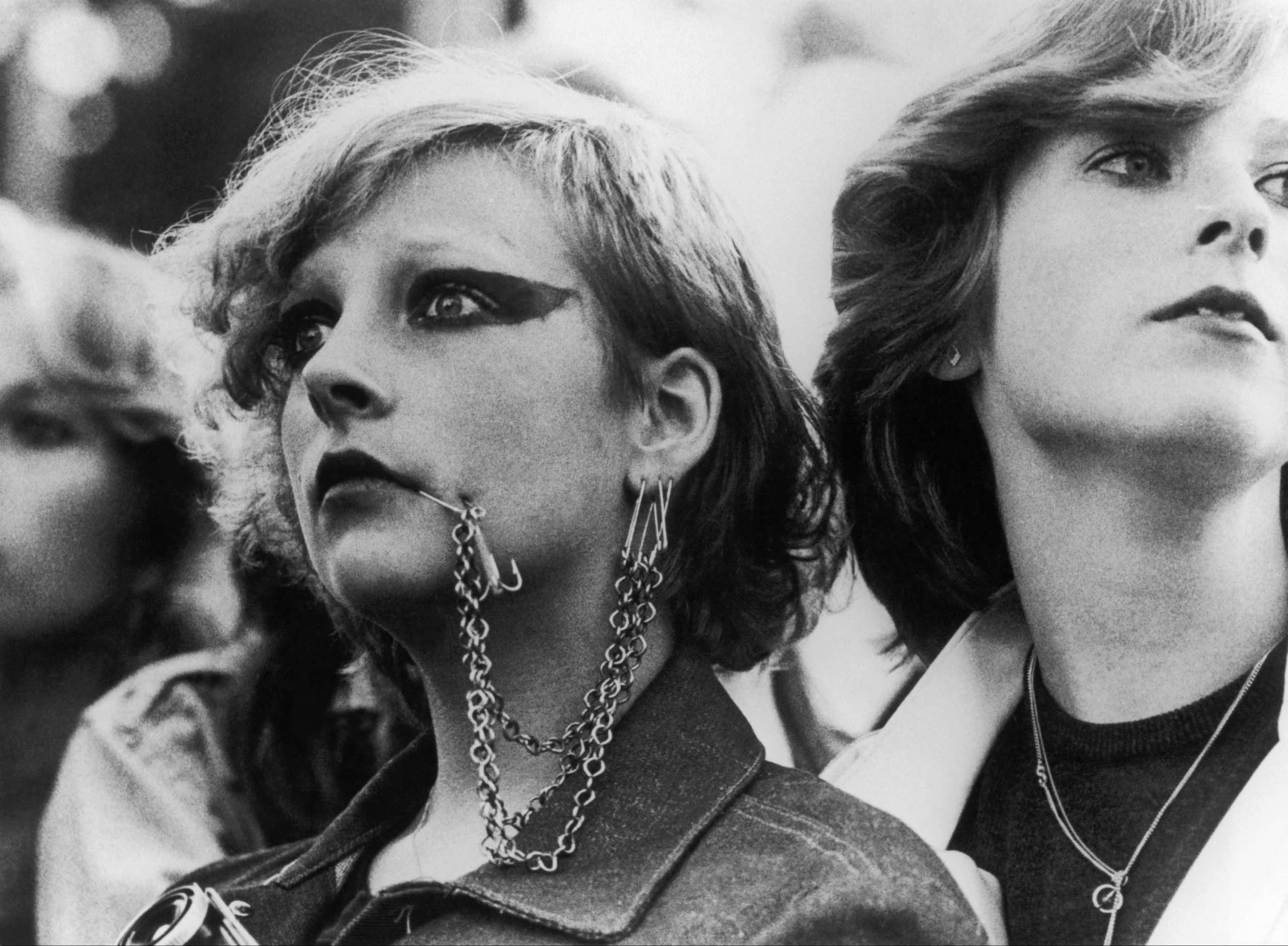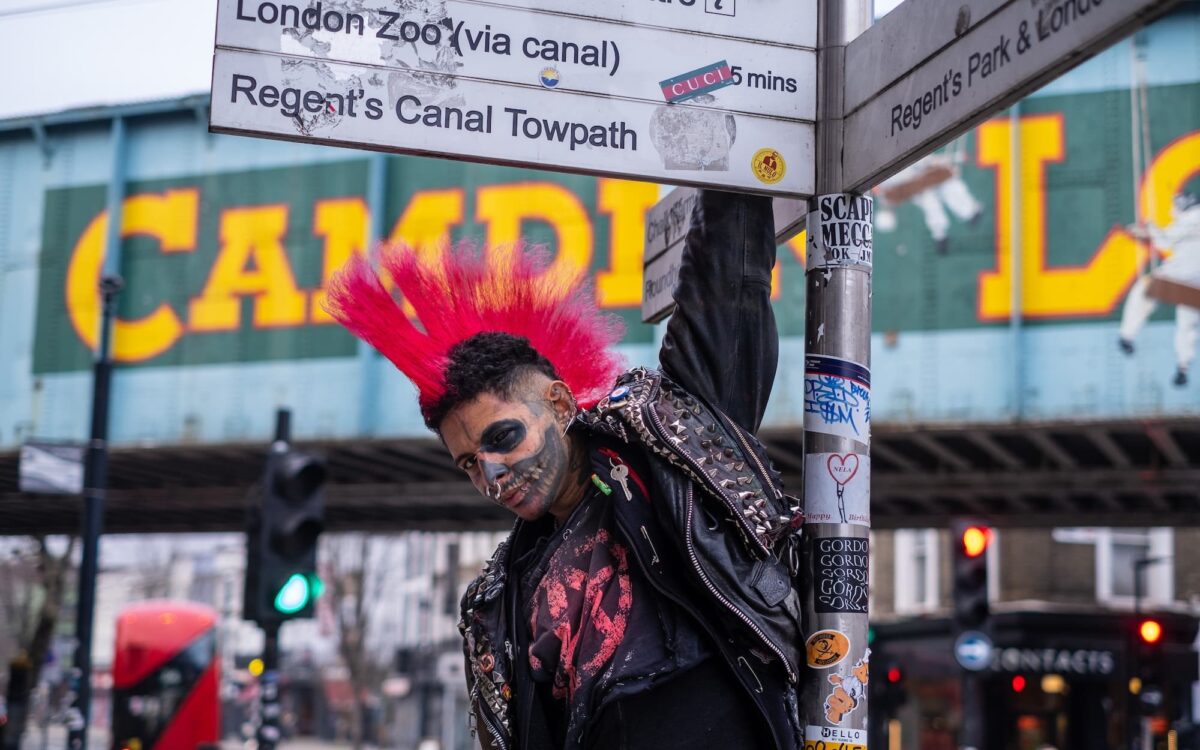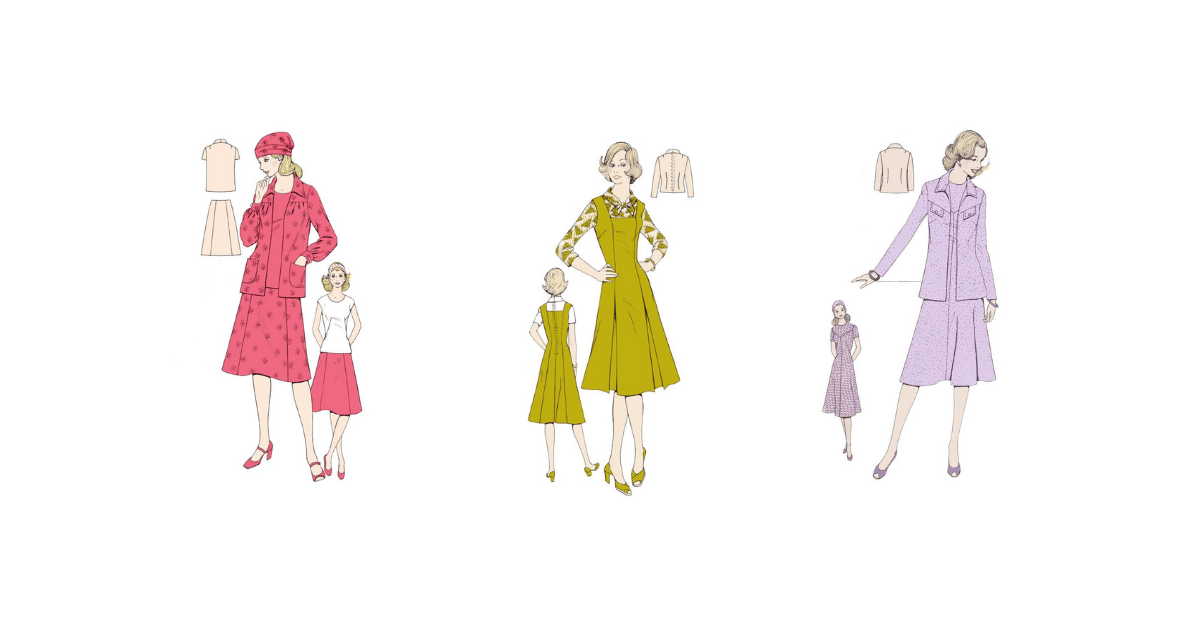- What Was Punk Fashion in the Early Days of the 1970s?
- Anti Fashion - Torn Fashion Becomes Punk Fashion
- Self Mutilation and Body Piercings
- Bondage in Early Punk Fashion
- Vivienne Westwood and Malcolm McLaren Open Seditionaries Shop
- Loads of Hair or No Hair
- Punk Gets Refined - Punk Chic From Zandra Rhodes
- A Final Word on Subcultural Styles - Punk
What Was Punk Fashion in the Early Days of the 1970s?
Today everyone knows what punk fashion is, but in 1970 it didn't exist. Punk first emerged in the mid-1970s in London as an anarchic and aggressive movement. About 200 young people defined themselves as an anti-fashion urban youth street culture. Closely aligned was a music movement that took the name punk.
Anti Fashion - Torn Fashion Becomes Punk Fashion
The clothes suited the lifestyle of those with limited cash due to unemployment and the general low-income school leavers or students often experience.
Punks cut up old clothes from charity and thrift shops, destroyed the fabric, and refashioned outfits in a manner then thought of a crude construction technique, making garments designed to attract attention. It deconstructed garments into new forms. Whilst torn fabrics, frayed edges and defaced prints are now considered normal in the 21st century, in the 1970s it shocked many people, because it had never been seen before. Until then fabric had been treated as a material to keep as pristine, new looking and beautiful as possible.
Trousers were deliberately torn to reveal laddered tights and dirty legs. They were worn with heavy Doc Martens footwear, a utilitarian, practical traffic meter maid type of footwear in that era, not seen on many young women until then. Safety pins and chains held bits of fabric together. Neck chains were made from padlocks and chain and even razor blades were used as pendants. The latter emerged as a mainstream fashion status symbols a few years later when worked in gold.
Self Mutilation and Body Piercings
Body piercing was done in parts other than the usual accepted placement in the ear lobe. The placement of studs and pins in facial body parts such as eyebrows and cheeks, noses or lips for the masses was then quite unusual even after the freedom of the 1960s.
Although it is known that Edwardian ladies used to have rings inserted into their nipples to make their breasts stand up more pertly, this was not a usual practice among the masses of the 1960s and 70s. Self-mutilation, rejection of prettiness, and body piercing were not a norm then.
The chosen placement of body jewelry and tattoos of the new punks was deliberately intended to offend the more conventional members of society. Punk fashion was also unisex and men began to spot facial jewelry. What we take as a normal strand of fashion today was all quite unusual back then.

Body piercing seems every day now in the 21st century. It entered mainstream fashion quite rapidly, beginning with the three stud earlobe, progressing to the whole ear outline embedded with ear studs. This was followed by Goths sporting nose studs in the early 80s.
Then in the 1990s belly, tongue and genital piercings all gathered a following among the masses.
Twenty-five or thirty years ago it was true anti-fashion and anti-establishment, but now it is so every day that not even great grandmothers titter. Thirty years after Punk emerged as a rebellious youth-oriented fashion many grandmothers and great-grandmothers sport a tattoo or piercing somewhere on their body.
Bondage in Early Punk Fashion
Black leather, studs, chains, mufti fabrics, greyed sweated out black T-shirts, bondage animal print bum flaps and leg straps epitomize some of the looks that immediately spring to mind when thinking of the early punks.
What was then thought to be blatant and obvious sexual references in written form, on dyed and destroyed vests have again become a norm and the masses happily don Tshirts emblazoned with fcuk or crave a graffiti print covered Louis Vuitton bag, both fashions very much accepted because of the path set by the early punk movement.
Vivienne Westwood and Malcolm McLaren Open Seditionaries Shop
Punk as a style succeeded even more when Vivienne Westwood and Malcolm McLaren formerly Malcolm Edwards, publicized the ideas through their joint design ventures. McLaren launched the 'Sex Pistols' Punk music group.
The punk group wore clothes from a shop called 'Sex' that Vivienne Westwood and her partner Malcolm McLaren opened on the Kings Road, London. They sold leather and rubber fetish goods, especially bondage trousers. Later the shop was renamed Seditionaries.
Not long after, Westwood launched alone renaming the same shop as 'World's End'. Westwood was soon translating her ideas into the fresher Pirate and Romantic looks. The collections were innovative, but were spoken of as unwearable, yet so often other designers picked up on ideas she had instigated and soon started another new trend.
In later years as her talent developed, her moods and methods changed. She mastered tailoring techniques combined with flair, frivolity and sexuality creating new looks that others copied. With a long stream of firsts behind her, Vivienne Westwood is now considered to be one of the most innovative designers of the 20th century.
Loads of Hair or No Hair
Punk hair is worthy of mention - A focal point of the punk look was the hair which was spiked as high as possible into a Mohican hairstyle by a variety of means including sugar and water solutions, soaping, gelatine, PVA glue, hair sprays, and hair gel.
It was big hair before the 80s big hair became everyday. Often it was colored pink or green with food dyes. It was intended to startle the onlooker and attract attention. Over bleaching was common and also became deliberate as home methods were initially employed to achieve hitherto unknown effects.
An alternative look was to shave areas of the scalp. Both sexes did this. They intended to make themselves look intimidating. Hair was sometimes dyed jet black or bleached white blonde. Eyes were emphasized with black and sometimes cat-like eye makeup and vampire-like lips drew more attention to the face.
Punk Gets Refined - Punk Chic From Zandra Rhodes
Around 1977, Zandra Rhodes the British dress designer took elements of the punk style and used it in her collections making refined and more elegant versions in bright colors which were more acceptable to the rich and famous. She used gold safety pins and gold chains to connect and decorate uneven hems and slashed holes. The carefully placed holes were edged with gold thread and the hems adorned with exquisite embroidery. She had always colored her hair with exotic colors and worn it as a form of plumage.
Watered down punk chic worked its way to the top end of the market. Versace too, also decorated dresses with large safety pins, most notably a black dress that Liz Hurley wore to accompany Hugh Grant at the premiere of the film 'Four Weddings And A Funeral' in about 1992.
Now every fashion shop has torn and distressed clothing items. Many are similar in concept to those originally sported by the first punks of the 1970s.
You may also be interested in the page Laver's Law a timeline of fashion style by James Laver.
If you are interested in other less conventional trends in fashion you will enjoy this book called Surfers Soulies Skinheads and Skaters: Subcultural Style from the Forties to the Nineties
Selfridges' Celebrate Punk
Selfridges Bags The Future of Punk (Press Report)
March 4th, 2006 sees the launch of the biggest punk rising since the BBC’s veto on Johnny Rotten’s rendition of God Save the Queen!
Inspired by next season’s modern take on glam-rock and to mark the thirtieth anniversary of Punk, Selfridges will present FuturePunk, its own twenty-first century interpretation of the attitude that has dominated youth culture and influenced fashion for three decades. With FuturePunk, Selfridges builds on its heritage of retail innovation and edginess, pushing boundaries in the name of the Punk spirit.
It will be a multi-dimensional event featuring music performances, exhibition and talks, where exclusive luxury goods will sit alongside vintage, punk classics and products such as t-shirts, badges, toys, books and CDs.
Alannah Weston, Creative Director for Selfridges, said: 'The project captures the spirit of this highly influential movement. We’re involving Punk luminaries from the past- such as Malcolm McLaren – as well as using it to launch new talent in fashion and music who are inspired by the challenging, DIY attitude of Punk.'
Nostalgia, Fashion and the Future will all play their part in FuturePunk, which promises to elevate Britain’s last working class movement into next season’s cult craze through its electrifying punk-inspired 4-week lifestyle event.
Representing a contemporary take on the spirit of Punk, Selfridges has collaborated with la crème de couture including Givenchy, Fendi and Chloe. The result - a rocking range of exclusive accessories, inspired by the trend that catapulted black-clad punks into an iconic status.
These coveted bags, belts and hair embellishments, many of which have only ever been viewed by those lucky enough to possess a pass to Paris fashion week will be available exclusively at Selfridges during March. Prices start from an affordable £89 for DKNY’s Logo X bucket bag to a glam £1,119 for Chloe’s chic ‘Gladys’.
A Final Word on Subcultural Styles - Punk
Subcultural styles developed around the 1940s and were identified in a book called Surfers Soulies Skinheads and Skaters - Subcultural Style From the Forties to the Nineties written by Amy de la Haye and Cathie Dingwall.
1970s Subcultural street styles include Afrocentric, B-Boy, Beatnik, Bhangra, Caribbean, Casuals, Cowboy, Cyberpunk, Eco, Fetish, Funk, Gay style, Glam rock, Greasers, Grunge, Head-Bangers, Hippy, Hipsters, Indie, Jungle, Madchester, Mod, New Age, Northern Soul, Old Skool, Preppy, Psychedelic, Psychobilly, Punk, Ragga, Rasta, Rave, Rude Boy, Skater, Skinhead, Soulies, Streestyle, Surfer, Techno, Teddy Boys (Teds), Travellers, Two Tones, Workwear Rockabilly, Yardies, Young British Radicals and Zoots.
I suggest that if you have an interest in any of the street styles listed above you obtain the illustrated and informative book.
It is interesting how many of the styles above continue to provide inspiration for designers. Many aspects have invaded the catwalks in the past decades so that we now see these once original styles in a new light as high fashion innovations in mainstream clothing. Once again another aspect of my page Laver's Law is at work here.
Real fans of punk will find here is a list of 40 Greatest Punk Albums of All Time.


